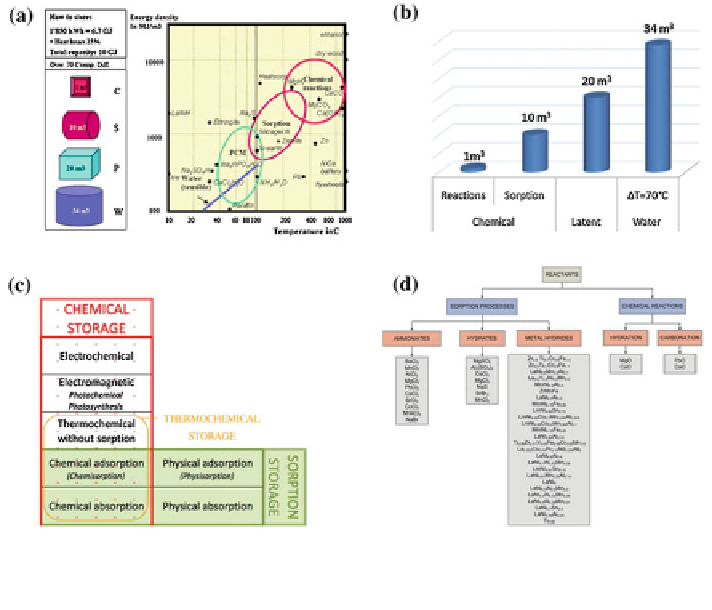Civil Engineering Reference
In-Depth Information
Fig. 1 a Energy density of high-energy storage methods, b volume required to store 6.7 MJ,
c chemical storage and sorption storage classification and d overview of working pairs tested in
prototypes under practical conditions
From this perspective, the implementation of energy-efficient TES systems
would possibly contribute to achieving energy savings potential and energy effi-
ciency in buildings. The broad categorization of TES technologies incorporated in
buildings is presented in Fig.
2
. The following section describes the operational
strategies of a variety of TES systems dedicated to provide cooling and heating
energy redistribution and energy conservation potential in buildings.
3.1 Thermal Energy Storage Using Building Fabrics
The fabric materials including bricks, concrete or a combination of these can be
utilized to store and release the heat energy upon thermal load demand in build-
ings. The building fabric materials used to construct wall, floor, ceiling and roof
structures are good enough to capture the thermal energy in the form of heat or
cold during off-peak hours and release the stored energy back to the conditioned
space in on-peak load conditions. The energy stored by the building fabric
materials may be classified into passive and active systems depending upon the
operational strategies involved in these systems.

